CONTENTS
1 Understanding RF Data Sheet Parameters
1 INTRODUCTION
D.C. SPECIFICATIONS
MAXIMUM RATINGS AND THERMAL CHARACTERISTICS
POWER TRANSISTORS: FUNCTIONAL CHARACTERISTICS
LOW POWER TRANSISTORS: FUNCTIONAL CHARACTERISTICS
LINEAR MODULES: FUNCTIONAL CHARACTERISTICS
POWER MODULES: FUNCTIONAL CHARACTERISTICS
DATA SHEETS OF THE FUTURE
2 RF Transistor Fundamentals
TRANSISTOR CHARACTERISTICS IN SPECIFIC APPLICATIONS
BANDWIDTH CONSIDERATIONS IN SELECTING TRANSISTORS
MOSFETs VERSUS BIPOLARS IN SELECTING A TRANSISTOR
WHATÌS DIFFERENT ABOUT RF TRANSISTORS?
OTHER FACTORS IN RF POWER TRANSISTOR SELECTION
3 FETs and BJTs: Comparison of Parameters and Circuitry
TYPES OF TRANSISTORS
COMPARING THE PARAMETERS
CIRCUIT CONFIGURATIONS
COMMON EMITTER AND COMMON SOURCE
COMMON BASE AND COMMON GATE
COMMON COLLECTOR AND COMMON DRAIN
4 Other Factors Affecting Amplifier Design
CLASSES OF OPERATION
FORMS OF MODULATION
BIASING TO LINEAR OPERATION
OPERATING TRANSISTORS IN A PULSE MODE
5 Reliability Considerations
DIE TEMPERATURE AND ITS EFFECT ON RELIABILITY
OTHER RELIABILITY CONSIDERATIONS
6 Construction Techniques
TYPES OF PACKAGES
THE EMITTER/SOURCE INDUCTANCE
LAYING OUT A CIRCUIT BOARD
TIPS FOR SYSTEMATIC PC LAYOUT DESIGN
MOUNTING RF DEVICES
RF MODULES
7 Power Amplifier Design
STABILITY CONSIDERATIONS
INDUCTORS
MODELING CAPACITORS AT LOW IMPEDANCES
THE INPUT IMPEDANCE OF A HIGH POWER RF TRANSISTOR
THE FIRST MATCHING ELEMENT: A SHUNT C
CAPACITORS AT RADIO FREQUENCIES
COMPONENT CONSIDERATIONS
A PRACTICAL DESIGN EXAMPLE OF A SINGLE STAGE
INTERSTAGE IMPEDANCE MATCHING
IMPEDANCES AND MATCHING NETWORKS
PUSH-PULL AMPLIFIERS
MOSFETs
PARALLEL TRANSISTOR AMPLIFIERS: BIPOLAR TRANSISTORS
QUASI-LUMPED ELEMENT REALIZATION
DISTRIBUTED CIRCUIT REALIZATION
SINGLE-ENDED RF AMPLIFIER DESIGNS: LUMPED CIRCUIT REALIZATION
SINGLE-ENDED, PARALLEL, OR PUSH-PULL
8 Computer-Aided Design Programs
8 GENERAL
INSIDE MOTOROLAÌS IMPEDANCE MATCHING PROGRAM
MIMP DESCRIPTION
SMITH CHARTS AND MIMP
9 After the Power Amplifier
VSWR PROTECTION OF SOLID STATE AMPLIFIERS
TESTING THE CIRCUIT
OUTPUT FILTERING
TYPES OF LOW PASS FILTERS
THE DESIGN PROCEDURE
THE COMPONENTS
10 Wideband Impedance Matching
INTRODUCTION TO WIDEBAND CIRCUITS
CONVENTIONAL TRANSFORMERS
TWISTED WIRE TRANSFORMERS
TRANSMISSION LINE TRANSFORMERS
EQUAL DELAY TRANSMISSION LINE TRANSFORMERS
11 Powewr Splitting and Combining
11 INTRODUCTION
BASIC TYPES OF POWER COMBINERS
IN-PHASE AND 180 COMBINERS
90 HYBRIDS
LINE HYBRIDS
RING HYBRIDS
BRANCH LINE COUPLERS
WILKINSON COUPLERS
12 Frequency Compensation and Negative Feedback
FREQUENCY COMPENSATION
NEGATIVE FEEDBACK
13 Small Signal Amplifier Design
SCATTERING PARAMETERS
NOISE PARAMETERS
BIASING CONSIDERATIONS
POWER GAIN
STABILITY
SUMMARY OF GAIN/NOISE FIGURE DESIGN PROCEDURES
ACTUAL STEPS IN LOW POWER AMPLIFIER DESIGN
DETERMINING DESIRED VALUES OF SOURCE AND LOAD IMPEDANCES
CIRCUIT REALIZATION
14 LDMOS RF Power Transistors and Their Applications
14 INTRODUCTION
LDMOSFET VERSUS VERTICAL MOSFET
DEVICE DESIGN
LDMOS CHARACTERISTICS
LDMOS TRANSISTORS FOR RF POWER APPLICATIONS
SOME FET APPROXIMATIONS
APPLICATIONS OF LDMOS TRANSISTORS IN CURRENT GENERATION CELLULAR TECHNOLOGIES
RF POWER AMPLIFIER CHARACTERISTICS
PRACTICAL EXAMPLE OF DESIGNING A W-CDMA POWER AMPLIFIER
CIRCUIT TECHNIQUES FOR DESIGNING OPTIMUM CDMA AMPLIFIERS
MODELING OF LDMOS TRANSISTORS
COMMENTS
Index
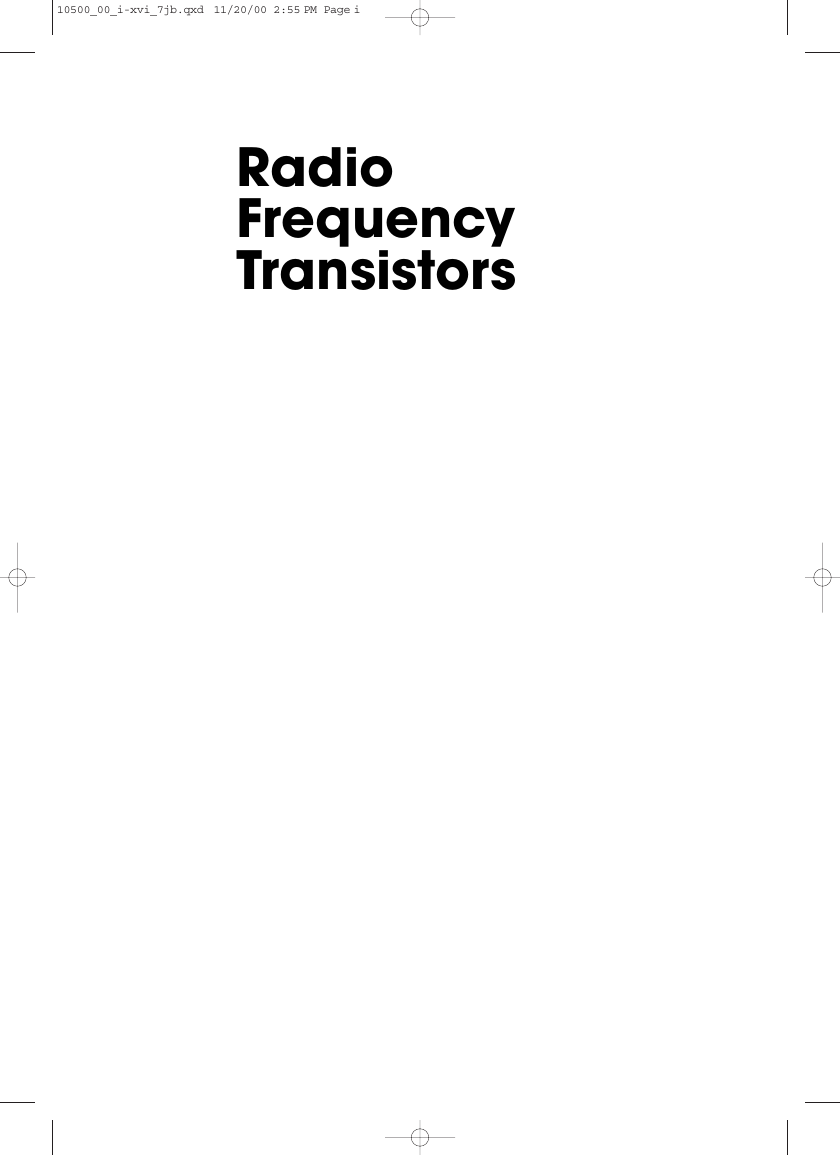

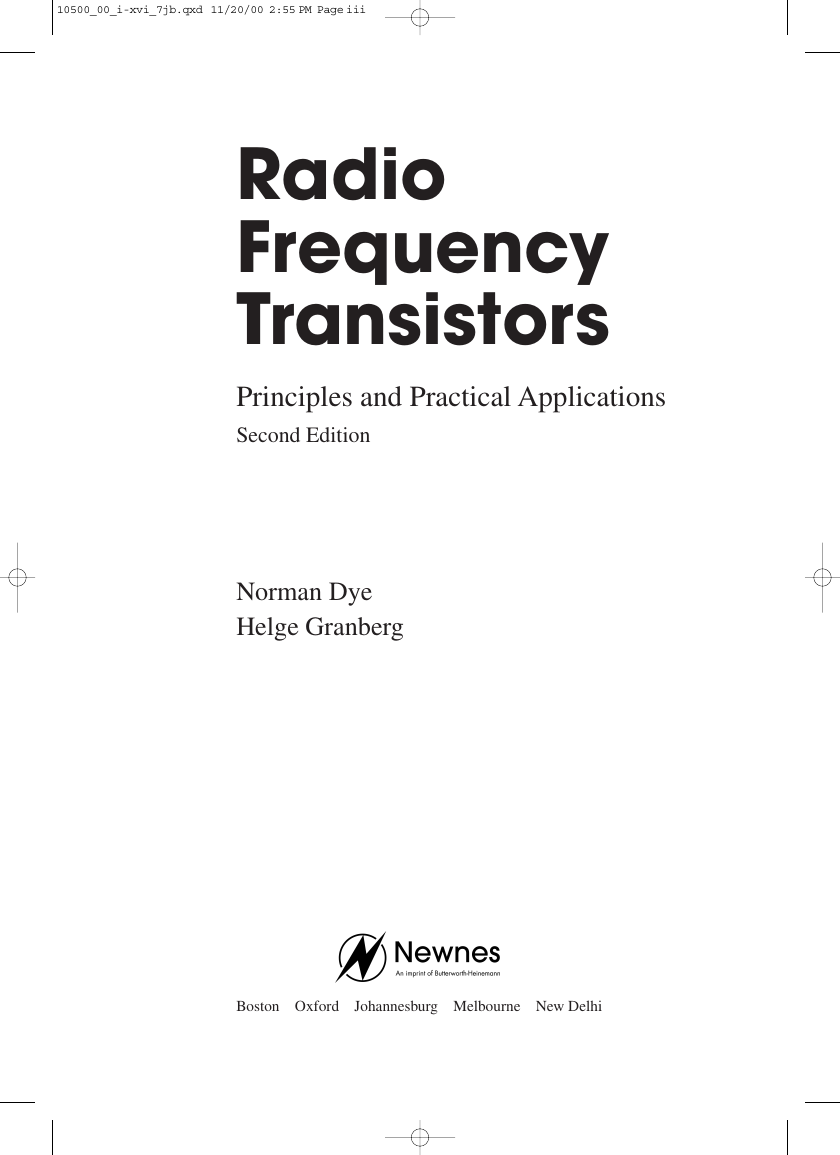
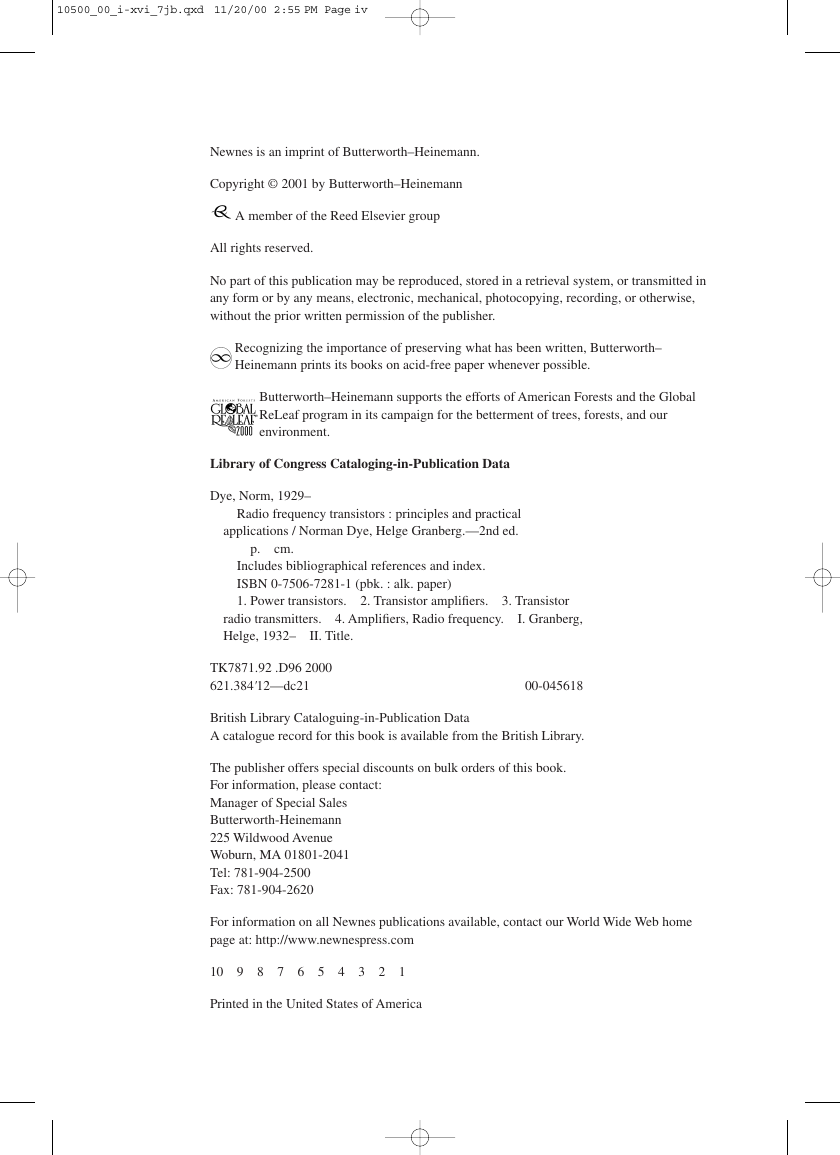


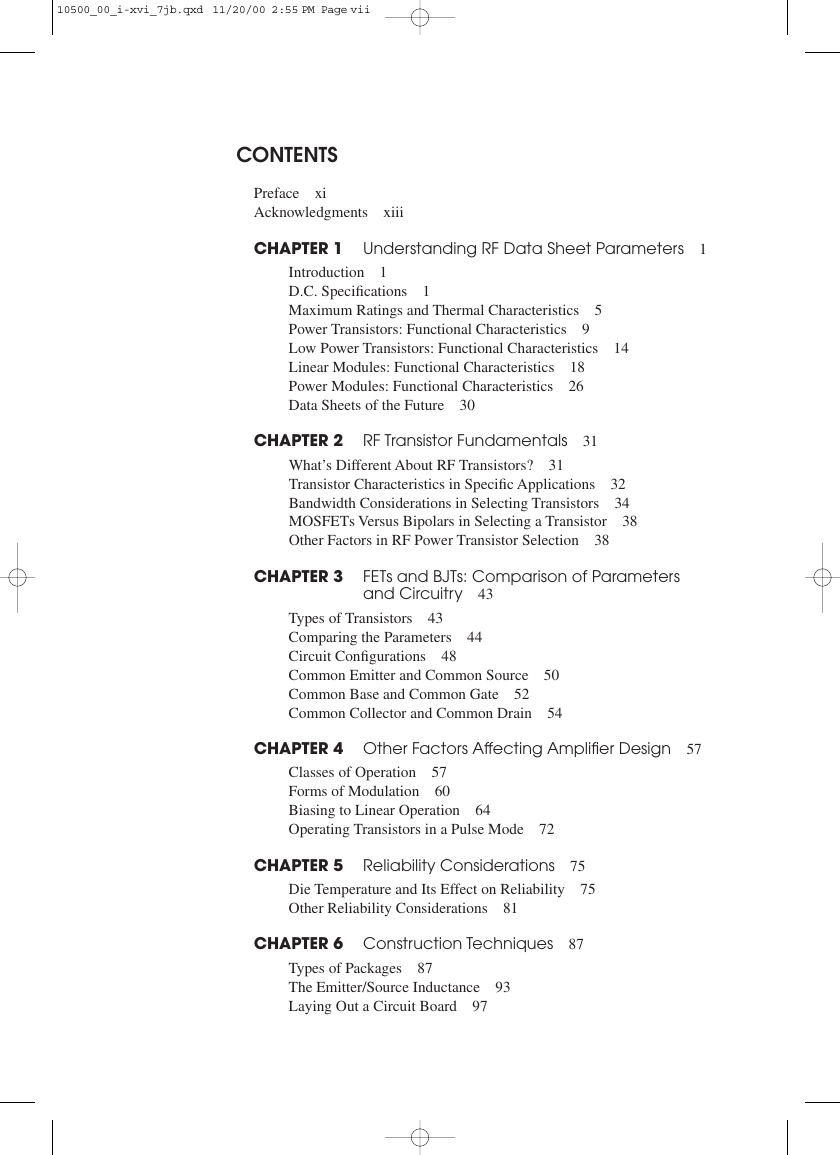
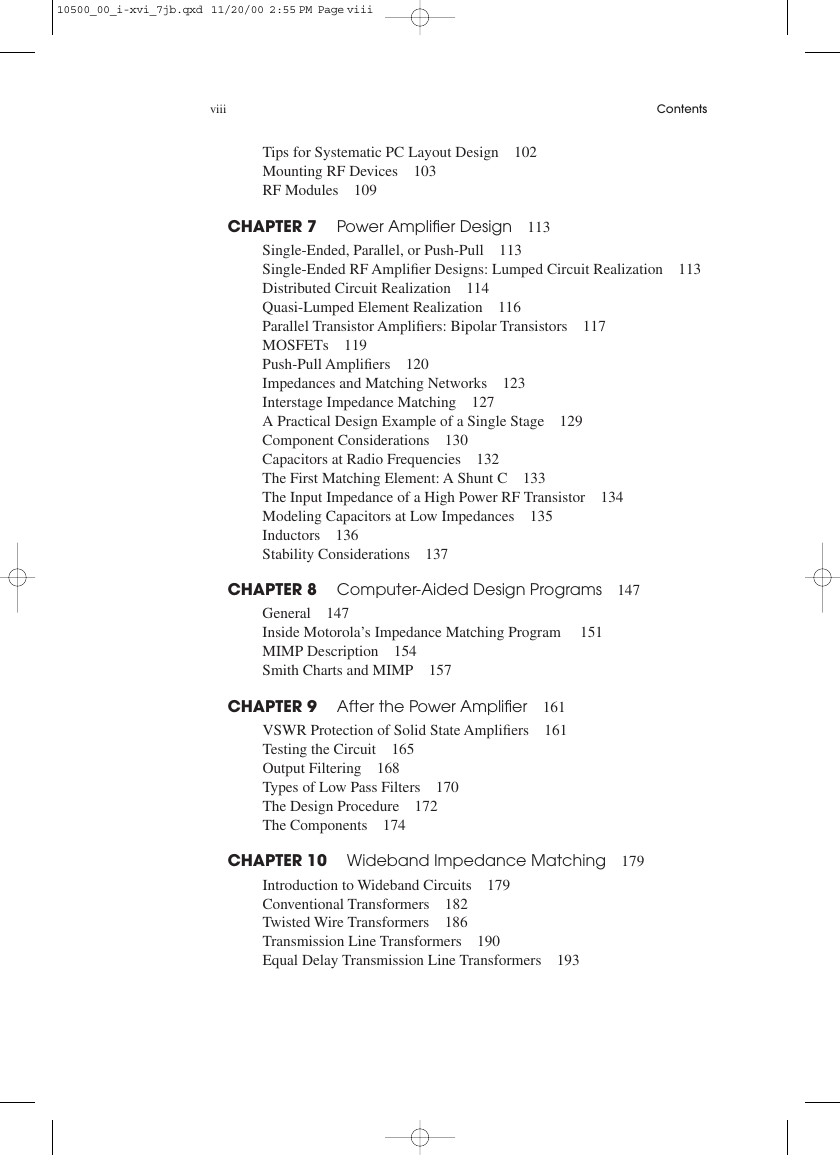








 2023年江西萍乡中考道德与法治真题及答案.doc
2023年江西萍乡中考道德与法治真题及答案.doc 2012年重庆南川中考生物真题及答案.doc
2012年重庆南川中考生物真题及答案.doc 2013年江西师范大学地理学综合及文艺理论基础考研真题.doc
2013年江西师范大学地理学综合及文艺理论基础考研真题.doc 2020年四川甘孜小升初语文真题及答案I卷.doc
2020年四川甘孜小升初语文真题及答案I卷.doc 2020年注册岩土工程师专业基础考试真题及答案.doc
2020年注册岩土工程师专业基础考试真题及答案.doc 2023-2024学年福建省厦门市九年级上学期数学月考试题及答案.doc
2023-2024学年福建省厦门市九年级上学期数学月考试题及答案.doc 2021-2022学年辽宁省沈阳市大东区九年级上学期语文期末试题及答案.doc
2021-2022学年辽宁省沈阳市大东区九年级上学期语文期末试题及答案.doc 2022-2023学年北京东城区初三第一学期物理期末试卷及答案.doc
2022-2023学年北京东城区初三第一学期物理期末试卷及答案.doc 2018上半年江西教师资格初中地理学科知识与教学能力真题及答案.doc
2018上半年江西教师资格初中地理学科知识与教学能力真题及答案.doc 2012年河北国家公务员申论考试真题及答案-省级.doc
2012年河北国家公务员申论考试真题及答案-省级.doc 2020-2021学年江苏省扬州市江都区邵樊片九年级上学期数学第一次质量检测试题及答案.doc
2020-2021学年江苏省扬州市江都区邵樊片九年级上学期数学第一次质量检测试题及答案.doc 2022下半年黑龙江教师资格证中学综合素质真题及答案.doc
2022下半年黑龙江教师资格证中学综合素质真题及答案.doc